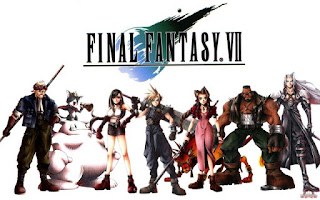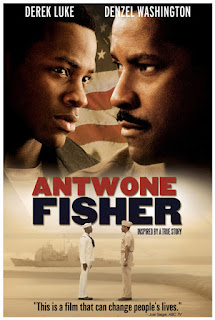Everyone knows, or has at least heard of, what multimedia is. It is, as One 3 Productions beautifully and compactly put it in their video, “telling a single story in multiple mediums.” It is one story being told over and over again in different formats such as film, television, novels, and even video games. This used to be the main strategy companies used in order to get their product to a wide variety of audiences. The main problem that faces this strategy is that if one person did not like the story in the book, they wont give it the time of day in any other format because it is the same story. This is where transmedia comes into play.
Transmedia, as defined again by One 3 Productions, is “telling multiple stories over multiple mediums that fit together to tell one big pervasive story.” There is one problem I have with that definition and it is at the end. Saying it fits together to tell one big pervasive story sounds like multimedia. I would prefer to say that it fits together to showcase one big pervasive world or universe. One story within the big pervasive world that is being told in one or many different formats. The access points within the world are now numerous, and this is the main difference with transmedia and multimedia. Now, multimedia is a cog in the bigger machine that is transmedia. One person can choose what ever format they want and whichever story they want and they are then able to enter that world.
There are many examples of this in todays media. We have Star Wars, which not only has multimedia elements (Episode I is currently available as a film, book, video game, and graphic novel) but bigger transmedia elements as well (There are numerous characters in the Star Wars universe whom each have their own stories, and those stories are told in various formats). The only catch (for lack of a better word) to Star Wars is that Lucasfilm, and now Disney, have made a great effort to make sure that every story told within the Star Wars universe coincides with the other stories (the legitimate “canon” stories that is).
 |
| Pretty much everyone in here effects everyone else... |
The main entertainment powerhouse that I will be discussing avoids this catch and takes transmedia one step further than Star Wars, and that ppwerhouse is DC. In terms of companies that use transmedia, DC is one that takes a bold approach to the idea. They have multiple access points to their content, which has different stories, but they do not use one universe to tie it all together. Instead, they use characters.
DC does something that most other companies that dabble in transmedia either don’t do at all, or don’t do nearly as much. Where there is one Star Wars universe, there are several DC universes. The content that DC has to offer is so vast that it would not only be nearly impossible to put into one coherent universe, but it could also be detrimental.
As of right now, everything involving Star Wars connects. The TV shows are part of the same story lines as the films, novels, and even games. There is one universe with several points of access into the universal story. DC on the other hand does not use one universal story. What keeps the DC universe together are the characters and some of the general information about them, and they offer different points of access into their universal characters.
 |
| Some say that if you name every DC character, you will learn the meaning of life. |
Very recently, DC had done an overhaul in their comic books called “Flashpoint,” which gave all of their comics a fresh #1 issue. These new issues would be called the “New 52.” DC did this because they knew that, in order to get new readers, they would need to give people a clear solid starting off point, and it worked (I myself am an example).
 |
| Say goodbye to all that money you thought you had in your wallet! |
However, unlike in Star Wars where the comics bleed into everything else, the New 52 starts and stops in the comics. Their television and film productions remain unaffected by the events in the comics. As a matter of fact, DC’s big branches (film, television, comics) do not effect one another. There are currently Four DC television shows on three different networks and none of them effect what goes on in the films that DC is releasing. Even more interestingly, only two of the four TV shows are confirmed to connect to each other. The more narrowed down you go into their media, the lesser options become available.
 |
| Gotham on FOX |
This use of characters as the connection between media outlets has its pros and cons. One con is that it narrows the selection a viewer has if they like a specific story. They don’t even have the pros of multimedia when choosing. For example, if someone likes DC’s tv series Gotham on FOX, they are only able to watch it there, and because it is in its own story (meaning not connected to the other TV shows) it is Gotham on FOX or nothing. Conversely with the films, if you like the story, then the films are your only way to follow it because they do not bleed into the shows or comics. However, it is not all bad. Using characters as connections instead of a universal story is not as alienating as one may think. Fans of Superman or Batman now have many different takes on their favorite heroes, instead of just one version through out. If I do not like how Batman is being portrayed in the films, I can just read the comics. Another plus is that if the films start to go in a direction one might dislike, then they can watch the television shows or read the comics, which are not bound by the story lines of the films.
 |
| Don't worry DC lovers, you have alternatives. |
What DC has done in their use of media is unique. As a whole, it is not doubt transmedia, but once one looks closer, they will start to notice that things get very specific. This seems to be negating what transmedia is trying to do by allowing multiple access points, but because the universal connection between the media is characters rather than just one world, it still keeps things open. It is both transmedia and singular media at the same time. It is hybrid media.
BIBLIOGRAPHY:
Image 1 - http://www.popoptiq.com/admirals-jedi-aliens-ten-notable-characters-star-wars-expanded-universe/
Image 2 - http://www.comicbookmovie.com/fansites/rorschachsrants/news/?a=22894
Image 3 - http://wordballoon.blogspot.com/2011/09/take-dc-comics-nielsen-survey.html
Image 4 - http://www.hollywoodreporter.com/live-feed/first-look-gothams-season-2-813290
Image 5 - http://www.forbes.com/forbes/welcome/
One 3 Productions, "Transmedia 101 by One 3 Productions" YouTube video









